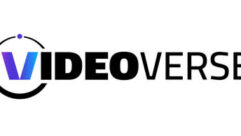
Relo Metrics , the leading AI-powered sponsorship analytics platform for real-time data decisions, announced they will be integrating VideoAmp’s industry-leading viewership data into their platform. VideoAmp’s dataset will power Relo Metrics’ ability to give sports rights holders, media companies, brands and agencies a highly accurate, real-time resource for measuring the value of on-camera sponsorships and brand exposure during a live event.
During game play, sponsor logos are visible on a variety of sources: worn by players, on stanchions and field-level signage, digital signage, as well as in the stands, near team benches, and even on items that are used by coaching staffs and other personnel during games. Relo Metrics’ AI computer vision models detect and track every logo visible to audiences—during broadcast, streaming video, and in content shared via social media—to determine the return on investment for each sponsor. Relo Metrics serves a large swatch of its industry and currently supports approximately 55% of North American tier one and tier two sports leagues, this includes MLB, NBA, NFL, NHL and MLS.
VideoAmp commingling methodology joins various data inputs like Set-Top Box data (STB) with Smart TV data from ACR providers, which undergo rigorous ingestion, cleansing, deduplicating and weighting processes to create a larger, more accurate overall dataset of 39M HHs and 63M Devices. By using big data inputs, as opposed to relying on panels, with a commitment to privacy-preserving technologies, VideoAmp is able to drive greater accuracy and representation of audiences across platforms. The integration with Relo Metrics further propels the entire industry towards a more accurate understanding of advertising spend and performance. With legacy measurement and currency metrics being phased out, VideoAmp’s dataset has been adopted by virtually all major networks and agency holding companies to underpin efforts around measurement, planning, optimization, targeting and transacting.
“We’re creating a new measure of value based on highly accurate content viewing metrics along with demographic attributes allowing us to present exposure value in terms of impressions, which is critical as the viewership continues to grow while fragmenting,” said Jay Prasad, CEO at Relo Metrics. “Being able to now value exposure in terms of household impressions is critical for accurate measurement. Lastly, this integration for the first time will allow the market to understand the total reach of live sponsorships alongside advertising in sports, this will be a big unlock of value for years to come.
“Sporting events have long captivated mass audience viewership and it’s become increasingly clear that accurate representation of viewership is critically important. We’re thrilled to be working with Relo Metrics in a way that gives brands and advertisers a clearer understanding of what their exposure looked like for a given event and what the value of that exposure was. We look forward to further developing this relationship and creating even more value for all parties in the advertising ecosystem,” said Michael Parkes, President at VideoAmp.
The combination of each company’s extensive technology and sports broadcast expertise improves upon previous industry viewership metrics based on manual data gathering or incomplete datasets. The new collaboration will also enhance the value of benchmarking data. Relo already performs placement-level benchmarking, for example, exposure on a scoreboard at a Major League Baseball game. Now, with the data provided by VideoAmp, the company can produce a benchmarking number that also includes the value derived from the total number of people watching the game at home on the go, and in the venue and through other platforms.









